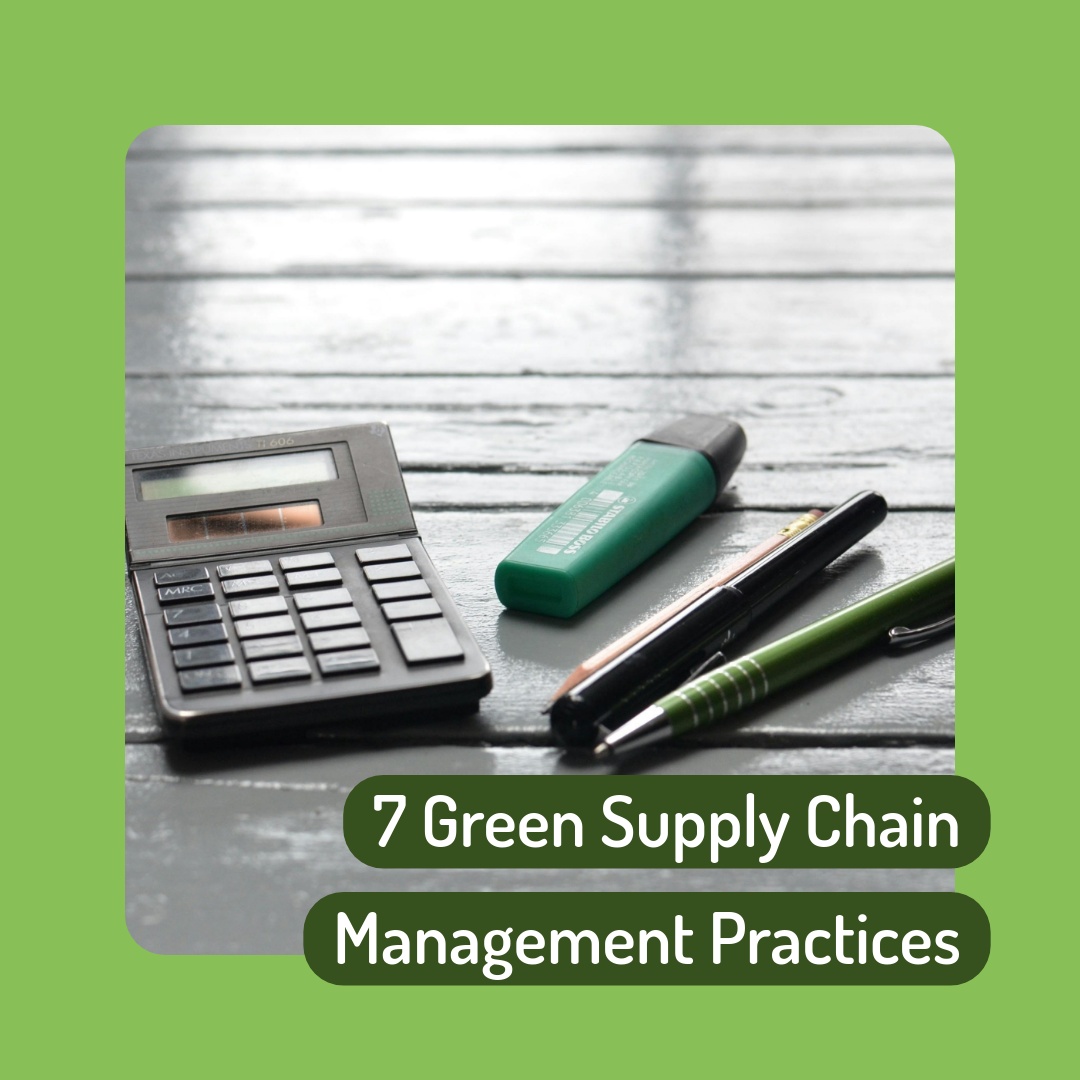7 Effective Green Supply Chain Management Practices

Green supply chain management practices are becoming more vital as companies globally strive to reduce their environmental impacts while staying competitive and efficient.
These practices not only promote environmental responsibility but also give a strategic advantage, making businesses apart and ensuring long-term sustainability and success
Here are 7 green supply chain management practices to ensure that businesses add something positive to the environment and enhance their position in varied marketplaces:
You Might Also Like: Exclusive Training on Sustainable Procurement: Generating Positive Impact in Supply Chains
Strategy 1- Grasp Sustainable Sourcing
Sustainable sourcing isn't a matter of just sourcing, instead, it is about making intelligent choices in sourcing raw materials.
What companies need to practice sustainable sourcing is pretty simple: the guidelines to be followed by suppliers should be clear enough.
The guidelines should majorly focus on the conservation of the environment and the sustainable exploitation of resources.
However, the companies must not only establish such rules but must see to it that the suppliers follow them.
It ranges from site visits of supplier installation to third-party audits. By doing this, they can concretely be sure that their standards are met, which may guarantee that the quality and sustainability of the supply chain may be maintained.
Read More: Strategic services sourcing – some Do’s and Don’ts
Strategy 2- Actualize Eco-Friendly Bundling

Eco-friendly packaging is all about reducing the environmental footprint of products by making intelligent choices for packaging. This usually involves two main strategies:
1: Reducing the amount of packaging used
First, products can be designed requiring less wrapping. The concept may be adjusting to the size or shape of the product for the standard shipping containers or designing robust products that need only a little protection packaging.
With the need for less packing, not only do businesses save on waste, but they also save on materials.
2: Use of biodegradable material
Another essential feature of the eco-friendly packaging is the use of biodegradable materials. Biodegradable materials are such that they decompose automatically in a friendly natural environment when disposed of.
Key examples include plant-based plastics, recycled paper, or other such organic elements that quickly decompose free of harmful residues. These materials guard against pollution and waste piled up in landfills.
Strategy 3- Optimize Transportation and Coordination
Transportation has to be optimized and coordinated as one of the elements that make the supply chain friendly to the environment and efficient.
The process will initiate right from intelligent route planning.
Here are a few ways to optimize transportation:
- Businesses must carefully figure out the best ways to get from one point to another, which can significantly reduce the distance vehicles travel.
- Manage how deliveries are arranged- It makes more sense to fill trucks than to send your trucks half-full. This way, fewer trips are needed, which not only saves fuel but also reduces traffic on the roads.
- Using modern software, companies can automatically find the most efficient routes while considering factors like traffic and weather. The company can monitor its shipments using real-time tracking and respond effectively to any delay that might arise in the shipment process.
Strategy 4- Contribute to Renewable Energy

Contributing to renewable energy is one of the ways that business enterprises can significantly help in the improvement of their sustainability and reduction of carbon footprint.
Here are 3 ways businesses can make the most of it by actively including renewable energy in the production line:
1. Solar Power Implementation
One good way is installing on top of company buildings and warehouses.
The current companies can reduce the immense percentage of use of fossil fuels by tapping the energy from the sun, thereby ensuring, in the end, lower prices of energy and less harm to the environment.
2. Wind Energy Investments
Companies are likely to either make a direct investment in wind energy by establishing wind farms or have partnerships that provide part of the energy needed.
Wind is not only clean but also efficient and increasingly cost-competitive—an excellent option for long-term energy planning.
3. Renewable Energy Purchase Agreement
This program allows businesses to buy directly from renewable energy producers, making sure a certain percentage of what the businesses use in energy will be from a renewable source.
It helps the environment and stabilizes costs for energy.
Read More: Cost Price Analysis in In Procurement & Contracts
Strategy 5- Advanced Circular Economy Standards
Receiving circular economy standards includes planning items and forms that empower the reuse, restoration, and reusing of materials.
An excellent way to do this may be through the institution of take-back programs.
Take-back programs are put in place to enable the return of used products to be either made into something new or recycled. This way, old products are not just thrown away and wasted in landfills.
It is also essential to provide backing for regulations that equate manufacturers with the liabilities of their products from the point of manufacture to disposal.
Extended Producer Responsibility (EPR) regulations enable manufacturers to plan products that are long-lasting and easy to recycle.
Strategy 6- Use Innovation and Information Analytics
Employing advanced technologies such as the Internet of Things (IoT) and Artificial Intelligence (AI) will change the management of business supply chains.
In that regard, the technology of the IoT provides real-time data, which increases transparency and helps optimize decision-making.
For example, IoT devices enable tracking of energy use and emissions in real-time. This will help companies understand where and how energy is consumed and make instant changes to increase efficiency.
A firm can also monitor its supply chain in real-time, thereby pinpointing problems and dealing with them in a manner not seen before.
You May Also Like: Total Cost Of Ownership (TCO)- The 3 Key Components
Strategy 7- Cultivate a Culture of Supportability
Create a sustainability culture by informing employees about the significance of sustainability and eco-friendly practices.
This effort in self-education enables everybody to understand how their actions may influence environmental purity and the role they play in making the organization more sustainable.
Leadership needs to lead by example to make sustainability something integrated into the heart of the organization.
This means setting clear environmental goals and demonstrating a commitment to these goals in every aspect of business.
Check Out Our Training Courses!
By implementing sustainable sourcing, eco-friendly packaging, renewable energy, and leveraging advanced technologies, companies can foster long-term success and competitiveness.
Creating a culture of sustainability within the organization and educating consumers about green supply chain management practices further enhance the overall impact.
Interested in improving your procurement & supply chain performance? Check out our Practical & Real-Life Procurement Training Courses to Cover Over 95% of Procurement Skills!
Frequently Asked Questions (FAQs)
Q: What is green supply chain management?
A: The green supply chain management (GSCM) includes the coordination of natural considerations in supply chain administration. This incorporates item plan, fabric sourcing, and choice.
Q: What are the barriers to GSCM?
A: Common GSCM barriers include high start-up costs, lack of awareness and commitment of the top management, and difficulties in measuring the economic benefits of green practices.
Q: How can companies execute eco-friendly bundling?
A: Companies can actualize eco-friendly bundling by utilizing recyclable, biodegradable, or reusable materials. Collaborating with bundling providers to enhance and create bundling arrangements that minimize natural effects is pivotal.


